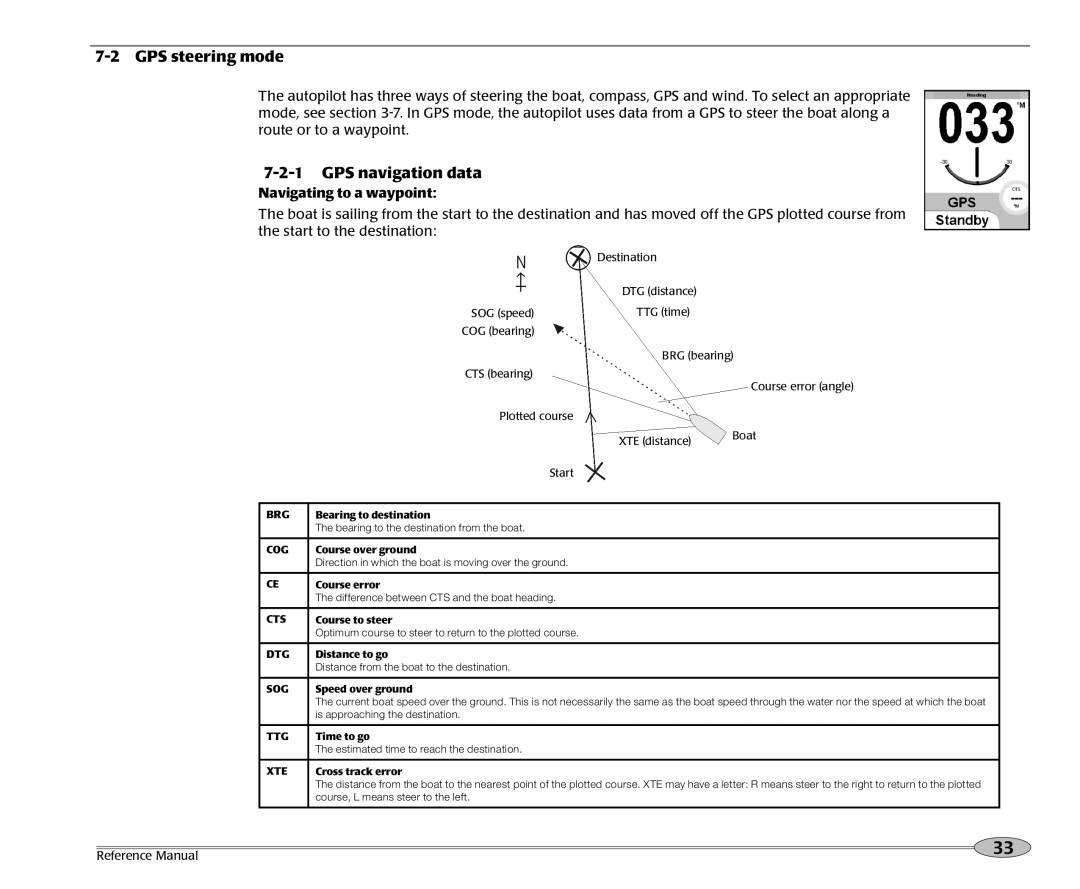NS3300 specifications
The NorthStar Navigation NS3300 is a powerful marine navigation system designed for both commercial and recreational vessels. It represents the pinnacle of marine technology, enabling sailors and captains to navigate with precision and confidence, regardless of conditions. The NS3300 is particularly renowned for its user-friendly interface, advanced features, and robust design, making it a favored choice among maritime professionals.One of the standout features of the NS3300 is its integration of the Global Navigation Satellite System (GNSS). This technology provides accurate positioning by connecting to multiple satellites, ensuring seamless navigation even in remote areas where traditional navigation methods may fall short. With the support for GPS, GLONASS, and other satellite systems, users can expect high reliability and accuracy in determining their vessel's location.
The NS3300 is equipped with a high-resolution color display that makes information easily readable, even in direct sunlight. The touchscreen interface is intuitive and responsive, allowing for quick access to essential navigation data. Users can customize their screens according to their preferences, displaying the information that matters most to them, including charts, routes, and environmental data.
Another critical aspect of the NS3300 is its advanced chart plotting capabilities. The system supports various digital chart formats, allowing users to integrate their preferred charts seamlessly. The built-in electronic chart display functionality helps in visualizing navigation routes and identifying potential hazards, ensuring safer passage through busy waterways.
The NS3300 also features connectivity options that enhance its functionality. With support for Wi-Fi, Bluetooth, and NMEA 2000 protocols, users can connect the NS3300 to other onboard systems, such as radar, sonar, and autopilot systems. This interoperability allows for a more integrated approach to navigation, providing a comprehensive overview of the vessel's environment.
Moreover, the NS3300 comes with robust weather information capabilities. It can receive real-time meteorological data, enabling captains to make informed decisions based on changing weather conditions. This feature is invaluable for both safety and route planning.
In conclusion, the NorthStar Navigation NS3300 is a sophisticated marine navigation system that combines state-of-the-art technologies and user-centric design. Its precise positioning capabilities, advanced chart plotting, connectivity features, and real-time weather information make it an essential tool for anyone venturing onto the water. Whether for commercial fishing, leisure sailing, or shipping, the NS3300 stands out as a reliable and efficient navigation solution. By integrating cutting-edge technology with usability, it empowers mariners to navigate with confidence and assurance.

